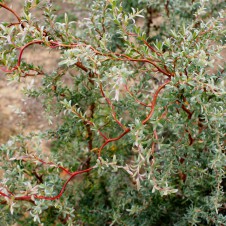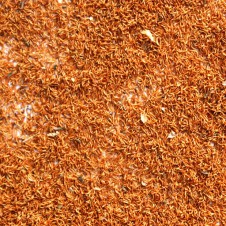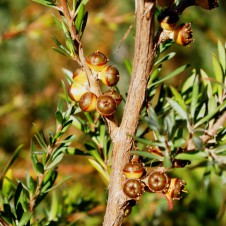General Description: A shrub, to 3 m tall, with dense, dull to glossy green foliage and creamy white flowers.
Flowers and Fruit: Large, white flowers occur crowded together on short leafy branchlets or on the branches, to 12 mm wide from November to January. Fruitis a woody capsule, to 7 mm wide, containing small, brown seeds. Capsules remain on the plant, and retain their seed, until the plant (or the branch holding the capsules) dies.
Site Preference and Tolerances: Found in moist places, favouring swampy ground or alluvial soils of stream-sides. Tolerant of poorly drained, boggy areas and frost resistant. Found on stream-sides and the margins of wetlands.
Life Span: Medium (20 to 80 years) to long-lived.
Wildlife Value: Attracts both nectar and seed-eating insects and birds. An excellent haven for waterbirds when growing in its natural state in large clumps near water. Butterfly attracting.
Other Values and Uses: Can be planted to assist in drying out wet soils and for control of erosion, particularly in gullies. Useful for low shelter in few-rowed, narrow, pure shelterbelts or used with taller belts of eucalypts to provide a high level of protection near the ground. Has showy white, scented flowers and can withstand cutting back to produce hedges or a screen. It is fast-growing and can be pruned to encourage branch development. Good cut flower filler.
Other Scientific Names: Leptospermum flavescens
Other Common Names: Creek Tea-tree, River Teatree
Germination Information: Can be propagated easily from seed and will direct seed well if weeds are controlled. Usually germinates in 2-5 weeks.



